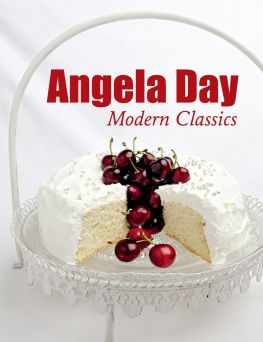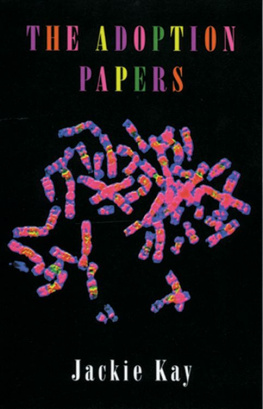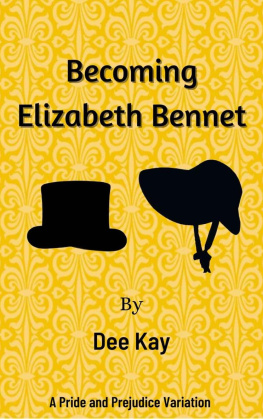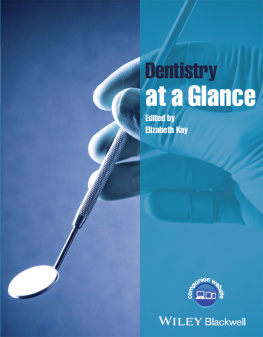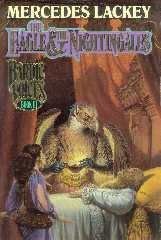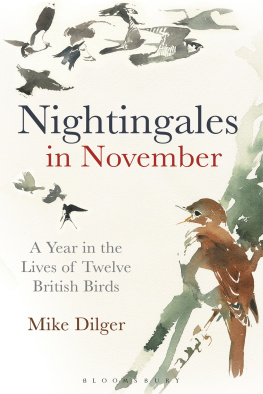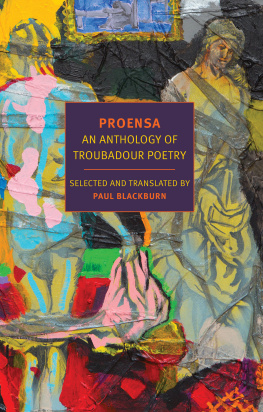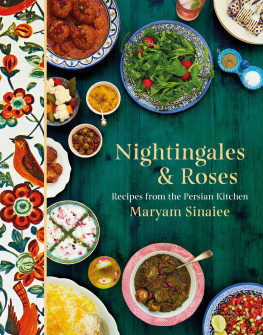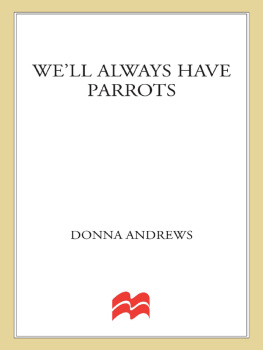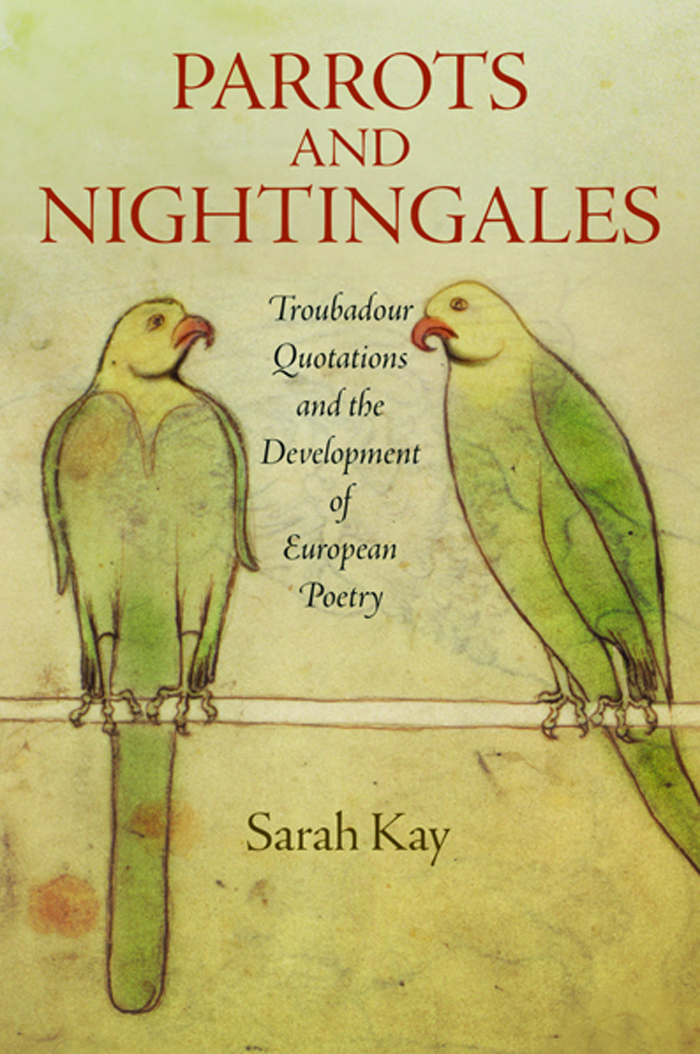Parrots and Nightingales
THE MIDDLE AGES SERIES
Ruth Mazo Karras, Series Editor
Edward Peters, Founding Editor
A complete list of books in the series is available from the publisher.
PARROTS AND
NIGHTINGALES

Troubadour Quotations
and the Development
of European Poetry
Sarah Kay

UNIVERSITY OF PENNSYLVANIA PRESS PHILADELPHIA
Copyright 2013 University of Pennsylvania Press
All rights reserved. Except for brief quotations used for purposes of review or scholarly citation, none of this book may be reproduced in any form by any means without written permission from the publisher.
Published by
University of Pennsylvania Press
Philadelphia, Pennsylvania 191044112
www.upenn.edu/pennpress
Printed in the United States of America on acid-free paper
10 9 8 7 6 5 4 3 2 1
Library of Congress Cataloging-in-Publication Data Kay, Sarah.
Parrots and nightingales : troubadour quotations and the development of European poetry / Sarah Kay. 1st ed. p. cm. (Middle Ages series)
Includes bibliographical references and index.
ISBN 978-0-8122-4525-7 (hardcover : alk. paper)
1. Provenal literatureHistory and criticism.
2. Troubadour songsHistory and criticism.
3. Quotations in literatureHistory and criticism.
4. European poetryProvenal influencesHistory and criticism. I. Title. II. Series: Middle Ages series.
PC3304.K39 2013
849'.1009dc23
2013005804
CONTENTS
NOTE ON REFERENCES, TRANSLATIONS, AND ABBREVIATIONS
Full references to all works cited in the notes using a shortened form of the title are listed in the bibliography. The bibliography also provides details of all the songs included in Appendices 1 and 2. Where there is more than one available edition, the one marked with an asterisk is the one referred to, unless otherwise indicated. The bibliography also indicates the spellings of troubadours names adopted here. These names are listed in the conventional order established by Pillet and Carstens in their Bibliographie der Troubadours; Pillet-Carstens (PC) numbers are also used to identify individual songs.
My own quotations from editions follow the spelling conventions of the editors concerned, except that I modernize and bring in line with American usage the use of capital letters and the punctuation of direct speech; additionally, I use italics in quotations and the text in which they are embedded in order to identify words or phrases that are repeated from one to the other.
References to troubadour songs use PC numbers; thus, for example, 70.1, 33 means line 33 of PC 70.1, this being the Pillet-Carstens identifier for Bernart de Ventadorns song Ab joi mou lo vers e.l comens. Passages quoted from the texts of songs are from the editions listed in the bibliography and are identified, in addition to their PC number, by their number in that edition.
All translations are my own, unless otherwise indicated.
The following abbreviations are used, primarily in the Appendices:
Ab | Abril issi e mays intrava by Raimon Vidal |
attrib. | attributed to, attribution |
BEdT | Bibliografia elettronica dei trovatori (online resource) |
Biographies | Biographies des troubadours, ed. Boutire and Schutz |
ca. | approximately |
cent. | century |
DA | Doctrina dacort by Terramagnino da Pisa |
DVE | De vulgari eloquentia by Dante |
ex. | example |
GDole | Guillaume de Dole by Jean Renart |
Leys 1341 | Moliniers first prose redaction of Las leys damors |
Leys 1356 | Moliniers second prose redaction of Las leys damors |
Mi | Miralh de trobar by Berenguer dAnoia |
PC | Bibliographie der Troubadours established by Pillet and Carstens |
RaT | Las Razos de trobar by Raimon Vidal |
ReT | Las Regles de trobar by Jofre de Foix |
Ri | Treatises from Ripoll |
RS | Raynouard and Spanke |
So (also So fo and So fo e.l tems) | So fo e.l tems com era gais by Raimon Vidal |
unattrib. | unattributed |
In addition, manuscripts are referred to by short, conventional sigla (see ).
Introduction
Quotation, Knowledge, Change
Quotationnot a very promising subject, you might think. Like the footnote, with which indeed it shares a common history, quotation seems more of an academic obligation than a creative act. Both Ovid and Marcabru come across as anti-parrot.
But parrots have always had their promoters, as we will see; and quotation has had its poetic high points too. One was in late antiquity when there developed the genre of the cento, a work put together entirely from fragments of classical texts.
also shows, the same troubadour passage is rarely quoted by more than one author or work. Almost all the works in question are in the same language as the troubadour lyrics they quote, a language I call Occitan.
No one questions the centrality of the troubadours to the development of European culture and, indeed, of European sensibilities; much has been written about the importance of their legacy. But this book is the first to restore to visibility the phenomenon of troubadour quotation and to study it as a whole. The dozen or so lines that Dante quotes have not previously been set in this wider context. Nor has it been appreciated to what an extent the act of repetition on which quotation (like many other scholastic practices) depends is, paradoxically, an engine of change. If troubadour poetry conveys knowledge of desire, quoting it exhibits desire for knowledge. This passage through the discourse of knowledgeor supposed knowledgeis, I shall argue, influential in transforming desire from its various elaborations as fin amor (or courtly love) in the Middle Ages to new and more learned formulations that culminate in what is often called the Renaissance.
This project has led me to revive a distinction that is not regularly upheld between citing and quoting. By citing, I understand referencing an author, a work, or an opinion. By quoting, I mean something much more textually precise: the verbatim repetition, in its original form, of a passage that can be anything in length from a complete line of verse to a sequence of several stanzas. For my study, a core of at least a line must be accurately repeated, even if (as often happens) this core is accompanied by recapitulation of a more allusive kind, for a passage to qualify as a quotation. (I have set the minimum at a full line since the troubadours stylized rhetoric abounds in reiterations of only a few syllables that may reflect convention more than intended allusion; and the network of connections between poets that this produces has been thoroughly studied by Jrn Gruber.) are all quotations in this sense.


